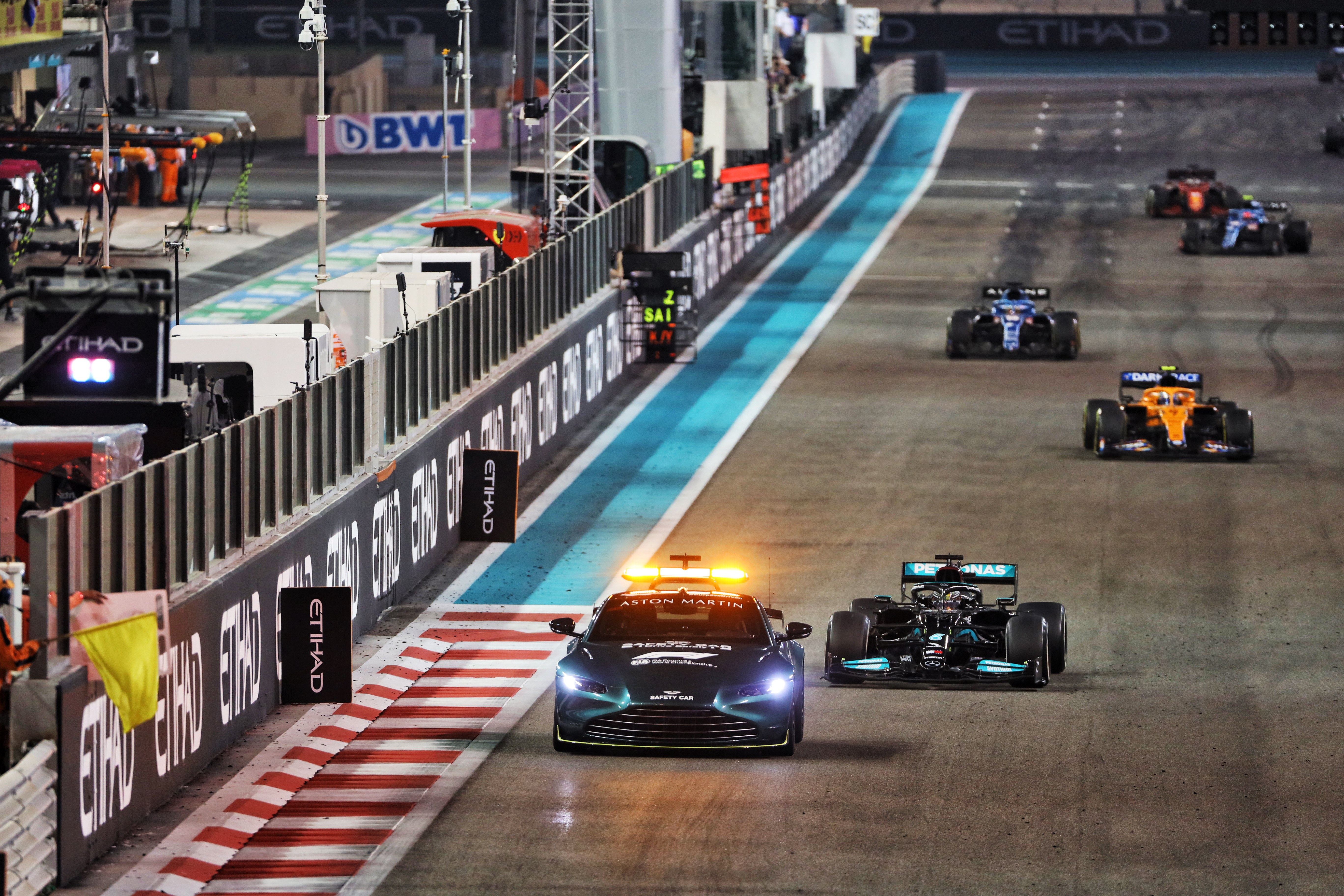Formula 1 will evaluate the possibility of introducing a “virtual unlapping procedure” next season as one of the recommendations of the FIA report into the handling of last year’s Abu Dhabi season finale.
The third recommendation in the executive summary of the report states that “unlapping procedures behind safety car should be reassessed by the F1 sporting advisory committee and presented to the F1 Commission prior to the start of the season”.
The process for unlapping cars was one of the key points of debate in the way the race was managed by race control. Initially, race control stated the lapped cars would not be able to overtake, but subsequently five of the eight cars – the group between race leader Lewis Hamilton and title rival Max Verstappen – were ordered past the safety car.
This also disadvantaged Ferrari driver Carlos Sainz, who started behind lapped cars rather than closing up to the top two, as well as a group of three drivers just outside the top 10 who had pitted for fresh rubber but were not close to the cars ahead at the restart.
Already, the rules have been clarified to eliminate any possible ambiguity, with the word “all” replacing “any” to make it clear that all unlapped cars will be allowed to unlap themselves rather than a subset thereof. This was ratified in a recent e-vote of the FIA world motor sport council.

The report executive summary states that “further investigation into the F1 timing system shall clarify whether a procedure could bring advantages and simplification”.
While this is not elaborated on in the report, such a system would likely allow the lapped cars to drop to the rear of the group of cars on the lead lap behind the safety car. This would eliminate the need for them to be waved past the safety car, and also potentially allow this reshuffle to be executed on a clear part of the track while the incident is being dealt with by track workers. This should therefore allow the restart to happen more quickly.
In Abu Dhabi, the five cars who were waved past leader Hamilton – Charles Leclerc, Esteban Ocon, Lando Norris, Fernando Alonso and Sebastian Vettel – would then simply have dropped to the back and started ahead of the three cars who were not allowed to unlap themselves – Daniel Ricciardo, Lance Stroll and Mick Schumacher.
But practical problems would have to be solved in order to make this possible, including modifying the software to allow a car to be credited with a lap they have not physically completed.
There is also the question of the race-distance fuel allowance, given any cars that are credited with a lap in this way would have more fuel available than they otherwise would. This could be dealt with by creating a system for some kind of pro rata deduction of the fuel used in the race. There is also the question of tyre life, but as that is down to the physical condition and behaviour of the tyres it is not something that can change.
Alternatively, it could simply be that the lapped cars are not put back on the lead lap and the backmarkers simply drop to the back of the queue and race from there. This would ensure that the cars on the lead lap close up for the restart, which was the reason that the lapped cars rule was introduced in 2012 in the first place.
It should be noted that all such possibilities would not have impacted the outcome of the race, as Max Verstappen would still have taken any restart right behind Lewis Hamilton with fresh rubber. But it would have changed the conditions in which the restart procedures were mishandled.
The report also confirmed that a new FIA F1 sporting director will be recruited, with the process for doing so now finalised. The details of the role and the identity of any candidates have not been disclosed.
An “additional senior regulatory legal counsel” will also be recruited to provide support on race weekends and assist on “F1 sporting matters”. This is likely to deal with the legal interpretation of regulations and the formulation of wording.




